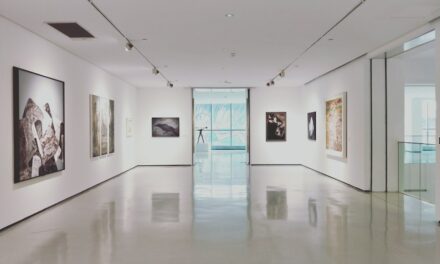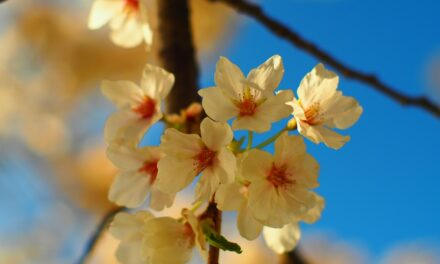Charcoal and pastel are two of the most beloved mediums in the world of art, each offering unique qualities that can elevate a work to new heights. Charcoal, with its rich, deep blacks and velvety texture, has been a staple in the artist’s toolkit since the Renaissance. It allows for expressive lines and dramatic contrasts, making it ideal for both sketching and finished pieces.
Pastel, on the other hand, is celebrated for its vibrant colours and soft application. This medium, which consists of pure pigment combined with a binder, can produce stunningly luminous effects that are difficult to achieve with other materials. Together, charcoal and pastel create a dynamic interplay of light and shadow, colour and form, that can bring a drawing to life.
The combination of these two mediums opens up a world of creative possibilities. Artists can harness the boldness of charcoal to establish strong outlines and deep shadows while using pastel to infuse their work with colour and vibrancy. This synergy allows for a more nuanced exploration of subjects, whether they be portraits, landscapes, or abstract compositions.
As we delve deeper into the properties, techniques, and applications of charcoal and pastel, we will uncover how to effectively utilise these mediums to enhance artistic expression.
Summary
- Charcoal and pastel are versatile and expressive mediums used in art for creating depth and texture.
- Understanding the properties of charcoal and pastel is essential for mastering techniques and creating stunning artwork.
- Combining charcoal and pastel techniques can result in unique and dynamic effects in artwork.
- Choosing the right paper for charcoal and pastel is crucial for achieving the desired texture and finish in artwork.
- Experimenting with colour and contrast can add vibrancy and visual interest to charcoal and pastel artwork.
Understanding the Properties of Charcoal and Pastel
To fully appreciate the potential of charcoal and pastel, it is essential to understand their individual properties. Charcoal is made from burnt organic materials, typically wood, which gives it a distinctive texture and a range of tonal values from soft greys to deep blacks. Its ability to create rich contrasts makes it an excellent choice for artists who wish to convey drama and emotion in their work.
The medium can be easily manipulated; it can be smudged for softer edges or sharpened for fine lines. Additionally, charcoal is forgiving; mistakes can often be erased or adjusted with a simple swipe of a finger or a kneaded eraser. Pastel, in contrast, is characterised by its vibrant hues and smooth application.
Available in both soft and hard varieties, pastels allow artists to achieve a wide spectrum of effects. Soft pastels are known for their intense pigmentation and blendability, while hard pastels offer more control for detailed work. The texture of pastel can range from velvety to chalky, depending on the brand and formulation.
When applied to paper, pastels can create a luminous quality that seems to glow from within, making them particularly effective for capturing light and colour in a way that feels almost three-dimensional.
Techniques for Combining Charcoal and Pastel
Combining charcoal and pastel requires an understanding of how each medium interacts with the other. One effective technique is to start with charcoal as the foundation of your drawing. By establishing the basic shapes and values with charcoal, you create a strong framework upon which to build your pastel application.
This approach allows you to focus on the composition and tonal balance before introducing colour. Once the charcoal layer is complete, you can begin layering pastels on top, using them to enhance the depth and vibrancy of your work. Another technique involves using charcoal to create texture within pastel drawings.
For instance, after applying a layer of pastel, you can use a charcoal pencil or stick to add fine details or shadows. This method not only enriches the visual complexity of the piece but also allows for greater control over the final outcome. Additionally, artists can experiment with different application methods; for example, using a brush or cloth to blend pastels into the charcoal can yield unique results that highlight the interplay between the two mediums.
Choosing the Right Paper for Charcoal and Pastel
The choice of paper is crucial when working with charcoal and pastel, as it significantly affects the final appearance of the artwork. For charcoal, textured papers are often preferred because they provide tooth—small ridges that hold onto the medium better than smooth surfaces. Papers specifically designed for charcoal are typically heavier weight and have a pronounced texture that allows for both layering and blending without tearing or warping.
When it comes to pastel, artists often opt for papers that have a pronounced texture as well, such as sanded paper or pastel paper with a velvety finish. These surfaces allow pastels to adhere more effectively while also enabling smooth blending. Some artists even choose to use paper that has been pre-primed or coloured to add an additional layer of depth to their work.
Ultimately, selecting the right paper involves considering both the desired effect and the techniques you plan to employ; experimenting with various types can lead to exciting discoveries in your artistic practice.
Creating Depth and Texture with Charcoal and Pastel
Creating depth and texture in artwork is essential for achieving a sense of realism and dimensionality. When working with charcoal and pastel together, artists can employ various techniques to enhance these qualities. One effective method is layering; by applying multiple layers of charcoal followed by pastel, you can build up rich textures that draw the viewer’s eye into the piece.
For instance, using lighter shades of pastel over darker charcoal can create an illusion of light breaking through shadow. Another technique involves using contrasting textures within the same piece. For example, you might use smooth strokes of pastel to depict skin tones in a portrait while employing rougher charcoal lines for hair or clothing.
This contrast not only adds visual interest but also helps define different elements within the composition. Additionally, incorporating techniques such as cross-hatching with charcoal can further enhance texture by creating intricate patterns that interact beautifully with the softness of pastel.
Experimenting with Colour and Contrast
One of the most exciting aspects of combining charcoal and pastel is the opportunity to experiment with colour and contrast. While charcoal provides a strong foundation in terms of value and depth, pastels offer an expansive palette that can be used to explore various colour schemes. Artists can play with complementary colours—those opposite each other on the colour wheel—to create striking contrasts that energise their work.
For instance, pairing warm tones like oranges and reds with cool blues and greens can produce dynamic visual effects that capture attention. Moreover, artists can utilise colour theory principles to enhance their compositions further. By incorporating analogous colours—those next to each other on the colour wheel—artists can create harmonious blends that evoke specific moods or atmospheres.
The interplay between the boldness of charcoal and the vibrancy of pastels allows for an exploration of both subtlety and intensity in colour application. This experimentation not only enriches individual pieces but also contributes to an artist’s overall growth and understanding of colour dynamics.
Tips for Blending Charcoal and Pastel
Blending is a crucial technique when working with charcoal and pastel, as it allows artists to create smooth transitions between colours and values. One effective method for blending pastels is using your fingers or a blending stump; this technique enables you to achieve soft edges and seamless gradients. However, it is essential to be mindful of how much pressure you apply during blending; too much force can result in muddy colours or loss of texture.
When blending charcoal, consider using a soft cloth or brush instead of your fingers; this approach helps maintain the integrity of the charcoal lines while still allowing for smooth transitions. Additionally, layering is key; rather than trying to blend everything at once, build up layers gradually. Start with lighter shades before moving on to darker tones; this method not only enhances depth but also allows for greater control over the final appearance of your work.
Final Touches and Finishing Techniques
As you near completion of your artwork using charcoal and pastel, adding final touches can elevate your piece from good to exceptional. One common technique is to use fixative spray specifically designed for pastels; this helps preserve your work while preventing smudging or fading over time. However, be cautious when applying fixative; too much can alter the appearance of your colours or create unwanted sheen.
Another finishing technique involves revisiting areas with both mediums to refine details or enhance contrasts. For instance, you might use a sharpened charcoal pencil to add fine lines or highlights after applying pastels. This final layer not only sharpens your composition but also reinforces the interplay between light and shadow established earlier in your work.
Ultimately, these finishing touches are what bring your artistic vision to fruition, allowing you to present a cohesive piece that reflects your unique style and creativity. In conclusion, mastering the combination of charcoal and pastel opens up a world of artistic possibilities that can enrich your creative practice. By understanding their properties, experimenting with techniques, selecting appropriate papers, and applying thoughtful finishing touches, artists can create compelling works that resonate with viewers on multiple levels.
Whether you are a seasoned artist or just beginning your journey into these mediums, embracing their unique qualities will undoubtedly lead to exciting discoveries in your artistic endeavours.
Combining charcoal and pastel for dramatic effects is a technique that can truly elevate an artist’s work. By blending the softness of pastels with the boldness of charcoal, artists can create stunning pieces that captivate viewers. In a related article on Inspired Imagery, artists discuss how they use different mediums to evoke emotions and tell stories through their art. This article delves into the creative process behind combining different materials to create visually striking pieces that leave a lasting impact on the audience.
FAQs
What are the benefits of combining charcoal and pastel for artwork?
Combining charcoal and pastel allows artists to create dramatic and dynamic effects in their artwork. Charcoal provides deep, rich tones and a strong contrast, while pastel adds vibrant color and texture. This combination can result in visually striking and expressive pieces.
How can artists effectively combine charcoal and pastel in their artwork?
To effectively combine charcoal and pastel, artists can start by laying down a base layer of charcoal to establish the composition and values. They can then use pastel to add color and texture, layering it over the charcoal to create depth and dimension. Blending tools can be used to seamlessly integrate the two mediums.
What are some tips for using charcoal and pastel together?
Some tips for using charcoal and pastel together include experimenting with different techniques, such as blending, smudging, and layering. It’s also important to consider the order in which the mediums are applied, as well as the type of paper used. Additionally, artists should be mindful of the dust and smudging that can occur when working with charcoal and pastel.
Are there any challenges associated with combining charcoal and pastel?
One challenge of combining charcoal and pastel is the potential for smudging and blending of the two mediums. Artists may also need to be mindful of the dust and mess that can result from working with charcoal and pastel. Additionally, achieving a balance between the two mediums to create a cohesive and harmonious artwork can be a challenge.
What are some examples of artwork that effectively combine charcoal and pastel?
There are many examples of artwork that effectively combine charcoal and pastel to create dramatic effects. Some artists use this combination to create portraits with intense contrast and vibrant colors, while others use it to depict landscapes with dynamic textures and atmospheric effects. The possibilities for combining charcoal and pastel are endless, and artists can explore a wide range of subjects and styles.


